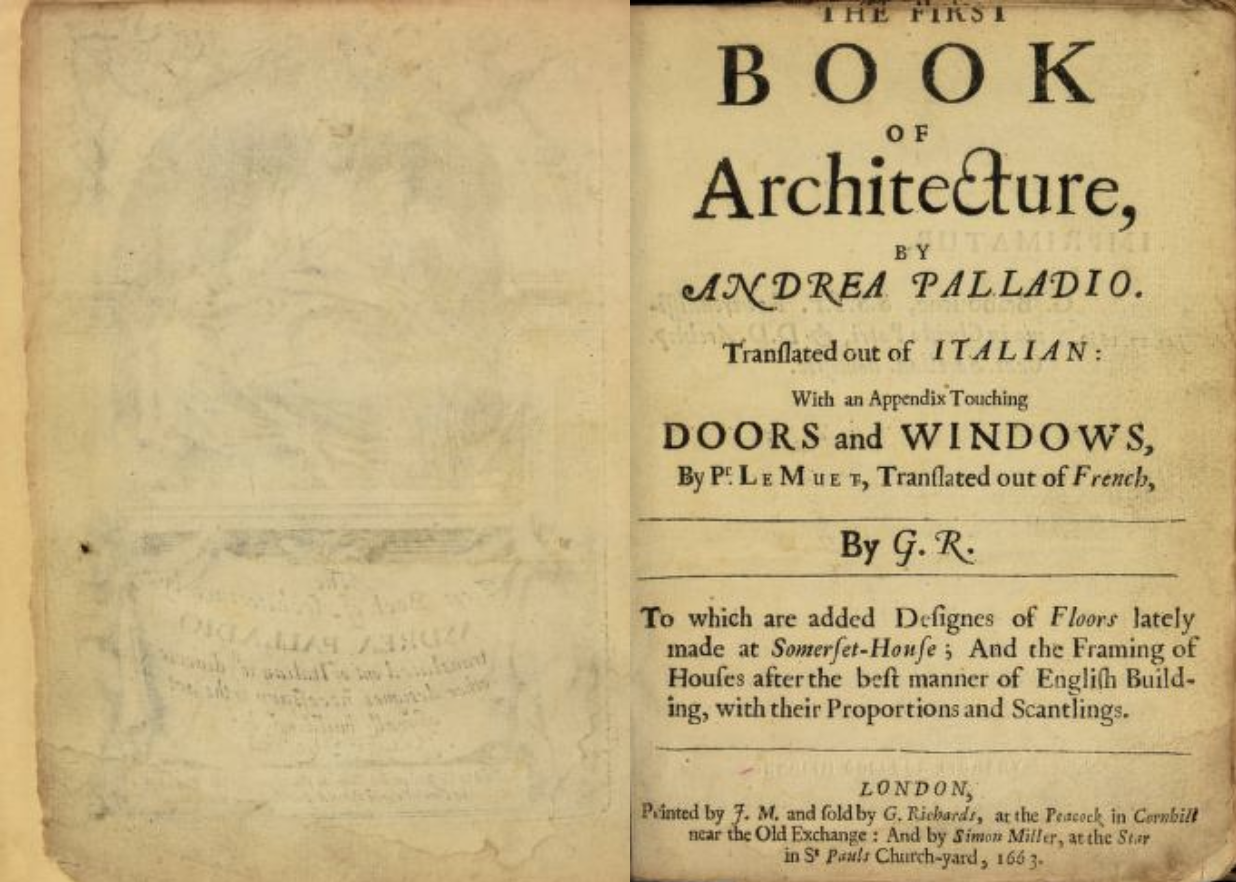Andrea Palladio – The First Book of Architecture
Architecture has always been a subject capable of dating the passage of time — different structures and methods of building often characterize certain time periods and are easily discernible from one another. Especially in the midst of the Scientific Revolution, architecture has seen dramatic changes and adjustments with respect to innovation. The methods of organization, construction, and reasoning have changed dramatically from the beginning to end of the early modern era, and continue to do so today. Beyond buildings alone, architecture includes irrigation systems to the organization of cities to road networks and much more — all of which were chiefly shaped by architects of the early modern era.
One of the most influential figures in the history of architecture is Andrea Palladio, an architect born in Padua, Italy in 1508 during the Italian Renaissance. Initially working as an apprentice for architect Giangiorgio Trissino, Palladio eventually became the architectural advisor to the Venetian Republic. He first wrote I quattro libri dell’architettura, translating to “The Four Books of Architecture”, in Italian in 1570, which was then translated to French by Pr. Le Muet, then published in English by Godfrey Richards in 1663. In light of his influence on architecture in its entirety, the ‘Palladianism’ movement emerged. Characterized by perfection and beauty, new designs of symmetry and balanced proportions swept across Europe and eventually the Western Hemisphere during the 16th and 17th centuries. Examples of this include the Chiswick House in London (constructed in 1729) and the Monticello in Virginia (constructed in 1809).
The first book, the focus of my study, consists of the varying building materials and techniques utilized during this time that have remained fundamental to architecture today. It outlines the steps and precautions that must be taken before the process of building actually begins to eliminate elementary problems, and also includes the five orders of architecture: Tuscan, Doric, Ionic, Corinthian, and Composite. He does so through his own hand-drawn images and designs, as well as through specific descriptions that characterize each type. For example, the Doric order is what one might imagine to be the typical Roman structure with large columns and a capital. However, the Tuscan order is very similar to the Doric order with the exception of a simpler base and slightly less detailed frieze. This further affirms how exact his illustrations and descriptions had to have been in order for others to decipher such minute details.
The Scientific Revolution was a time of innovation and efficiency, and the Books of Architecture epitomize this era. The first volume demonstrates the idea that certain techniques were systematically observed and recorded, ultimately promoting productivity and sophistication in subsequent designs and construction processes. This could, in turn, be studied and applied universally. The act of recording and publishing an extremely methodical and descriptive treatise further exemplifies why so many new advancements, especially in the scientific field, emerged during the early modern era. Today, we continue to turn to these seemingly archaic concepts for guidance, ultimately defining scientific works of the Renaissance (such as the First Book of Architecture) as timeless evolutionary accomplishments. Through the test of time, Andrea Palladio’s work will always be regarded as valuable and respectable for its components and its importance as a milestone in the early modern era.
Citations: - Glancey, Jonathan. “The Life and Legacy of Andrea Palladio, One of the Greatest Architects Ever.” The Guardian, Guardian News and Media, 5 Jan. 2009, http://www.theguardian.com/artanddesign/2009/jan/05/architect-andrea-palladio. - NA. “I Quattro Libri Dell'architettura.” Wikipedia, Wikimedia Foundation, 20 Jan. 2020, en.wikipedia.org/wiki/I_quattro_libri_dellarchitettura. - Palladio, Andrea. “The First Book of Architecture : Palladio, Andrea, 1508-1580 : Free Download, Borrow, and Streaming.” Internet Archive, London : Printed by J.M. and Sold by G. Richards ... and by Simon Miller ..., 1 Jan. 1663, archive.org/details/firstbookofarchi0000pall/page/n8/mode/2up. - Tavernor, Robert. “Culture - Palladio's Four Books on Architecture - 2000.0719.” ArchitectureWeek, Artifice, 19 July 2000, http://www.architectureweek.com/2000/0719/culture_1-1.html. - Tavernor, Robert, and Richards Schofield. “The Four Books on Architecture.” The MIT Press, The MIT Press, 0AD, mitpress.mit.edu/books/four-books-architecture.
